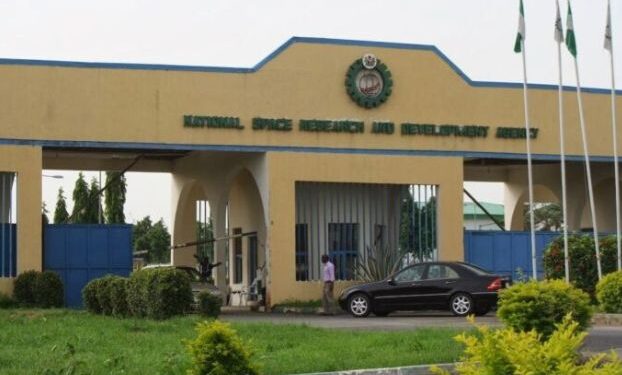The Federal Government of Nigeria has shown a growing interest in space technology and exploration and has invested steadily in it in recent times.
To this note, an estimated 17 trillion naira has been allocated to the Nigerian Space Program in the 2022 national budget. This is 7.3% higher than the amount stipulated for the sector in 2021 and even higher than in 2020.
Why it matters
Space technology has recently been cited as one of the most significant technological developments in 2022. This is because more companies and governments are entering the industry on a global scale; exploring its capabilities.
Nigeria as the largest economy in Africa has risen equally to the challenge and the results have been astronomical.
Nigeria’s space ambition
The Nigerian Government had expressed its interest in space as way back as 1976, during an inter-governmental meeting held in Addis-Ababa. However, her journey towards that ambition was only at a crawl until only recently.
The NASRDA:
1999 marked the first real leap in the country’s space ambition. In May, the National Space Research and Development Agency (NASRDA) was established as an agency under the Nigerian Ministry of Science and Technology.
Eleven years later, the NASRDA Act 2010 was signed into law. It is the legislation that encourages and facilitates capacity building in space sciences and technology development and management, as well as regulating the activities and conduct of personnel within the framework of the Agency.
Although it is located in the nation’s capital, Abuja, NASRDA is in collaboration with the United Kingdom, China, Ukraine and Russia. Its activities in the past two decades have gained a reputation as one of the most advanced space agencies in Africa with 4 independent satellites in orbit.
The Satellites:
The first Nigerian satellite to be launched into orbit was the Nigeria-1. The $13 million satellite was one out of 5 satellites in a network called the Disaster Monitoring Constellation (DMC). These satellites are owned by Nigeria and other partners (UK, China, Algeria, Turkey, Thailand and Vietnam) in the international consortium. These satellites share information when disaster monitoring is needed.
The Nigeria-1 was built by the world-leading supplier of advanced operational small satellites, Surrey Satellite Technology Limited (SSTL) and launched in Plesetsk, Russia in September 2003.
The Low Orbit Satellite (LEO) which was built to study the environment and its resources has been used to respond to floods, volcanic eruptions, oil spills and fires in West Africa, Syria, Argentina/Paraguay, Vietnam, North Korea, New York, Yemen, Columbia, Lyme-Bay, UK, California, etc.
Since then, 3 other satellites (NigeriaSat-X, Nigeria EduSat, Nigeria-2) have been launched with different objectives, all of which were built by SSTL with the participation of trained scientists and engineers from Nigeria and the other countries involved.
The primary focus areas of the Nigerian Space Program
- Assist and equip Nigeria’s defence and security sector with valuable intelligence.
- Use basic space science and technology to provide a more comprehensive understanding of the universe and how it works.
- Provide remote sensing to help Nigerians understand and manage the environment and natural resources.
- Enhance satellite meteorology for the study of atmospheric and weather sciences.
- Facilitate communications and information technology to provide efficient and reliable telecommunication services within the country.
Challenges facing Nigeria’s space goals
For a country that has nurtured its space ambition for decades, the Nigerian space dream is still in its infancy and barely making the right degree of waves.
Here are some of the many challenges that have stymied its growth so far:
- Insufficient funds from the government as well as uneven distribution of wealth: Although the federal government has invested huge funds from the national budget for the industry in the recent past, it has not been enough to provide and retain all the infrastructure and talent needed to build the digital economy.
- Leadership changes: While a government may show an interest in developing an industry, a constant change in governance has also led to instability in the growth of an industry. This is because no two departments share the same agendas or priorities, so the suspended projects suffer from neglect.
- The absence of well-trained, world-class engineers and scientists in the field: All 4 satellites launched by the Nigerian government were built by teams consisting of fewer Nigerian engineers and scientists in contrast to the foreigners present. Most of these Nigerian scientists and engineers were still amateurs, receiving on-the-job training. Even now, the country still has no record of a qualified, indigenous astronaut whom they could launch into space.
- The absence of a launch site anywhere within the country: For every indigenous satellite launched, Nigeria has depended on foreign agencies (in Russia, and China) and organizations (SSTL) for the supply of construction materials, human resources and launch sites from whence to launch most of its satellites. The country’s government has made no efforts to construct its launch site within the country.
What the Nigerian space dream needs:
There’s still a lot to do before we can truly be part of the space economy. However, it all starts with a new and improved mindset.
McKinsey reports that in the past 5 years, the biggest shift in space exploration and technology has been the acceleration of the cost curve, which is increasingly opening new capabilities. Today, the value of space technologies in the world is estimated at $447 billion. By 2030, this value is expected to grow by an additional 10% or more.
The report also proposed that leaders pay close attention to new business models such as vertical integration and increase their focus on software and value-added services to provide real-time insights to the public.
To this end, the government and its people must direct more investments in this project. Not only in financial terms but in human resources and strategic planning as well. It is therefore imperative that more startups and individuals rise to build and develop this industry collectively to reach its full potential.

































